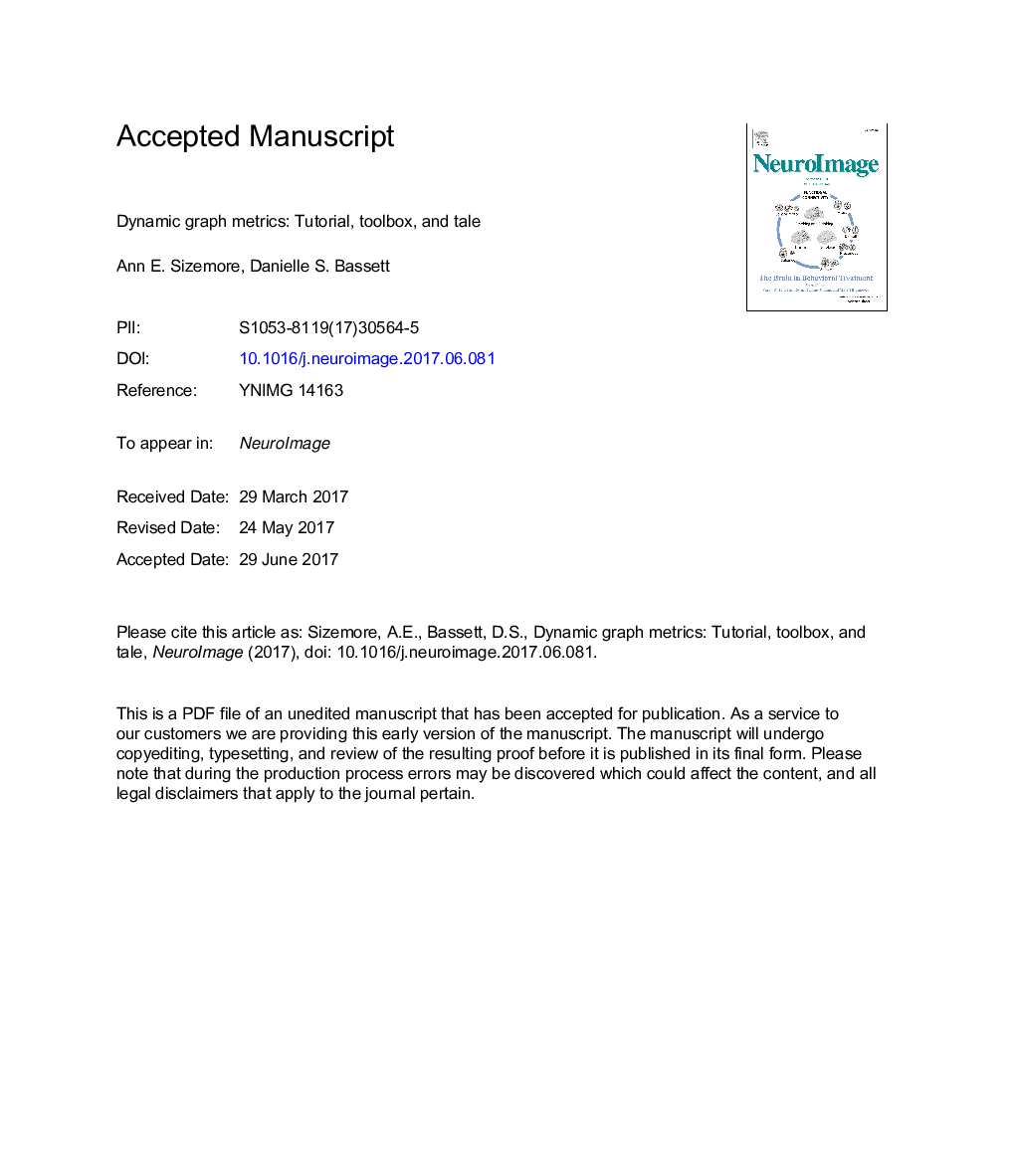| Article ID | Journal | Published Year | Pages | File Type |
|---|---|---|---|---|
| 8957313 | NeuroImage | 2018 | 20 Pages |
Abstract
The central nervous system is composed of many individual units - from cells to areas - that are connected with one another in a complex pattern of functional interactions that supports perception, action, and cognition. One natural and parsimonious representation of such a system is a graph in which nodes (units) are connected by edges (interactions). While applicable across spatiotemporal scales, species, and cohorts, the traditional graph approach is unable to address the complexity of time-varying connectivity patterns that may be critically important for an understanding of emotional and cognitive state, task-switching, adaptation and development, or aging and disease progression. Here we survey a set of tools from applied mathematics that offer measures to characterize dynamic graphs. Along with this survey, we offer suggestions for visualization and a publicly-available MATLAB toolbox to facilitate the application of these metrics to existing or yet-to-be acquired neuroimaging data. We illustrate the toolbox by applying it to a previously published data set of time-varying functional graphs, but note that the tools can also be applied to time-varying structural graphs or to other sorts of relational data entirely. Our aim is to provide the neuroimaging community with a useful set of tools, and an intuition regarding how to use them, for addressing emerging questions that hinge on accurate and creative analyses of dynamic graphs.
Related Topics
Life Sciences
Neuroscience
Cognitive Neuroscience
Authors
Ann E. Sizemore, Danielle S. Bassett,
